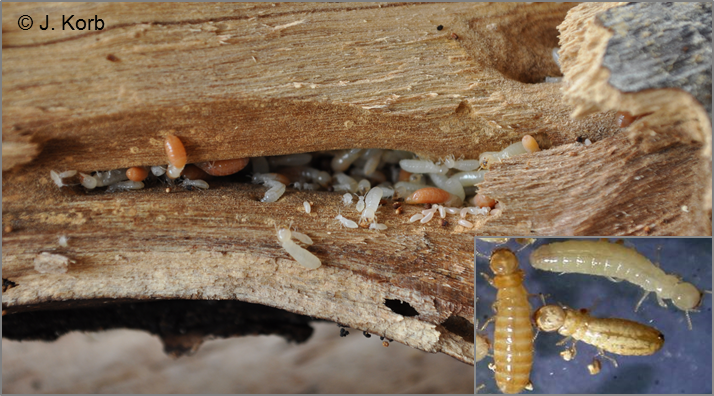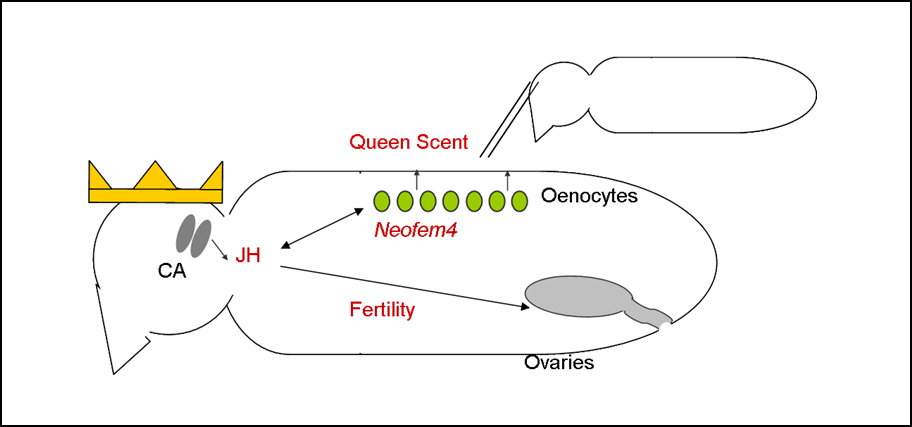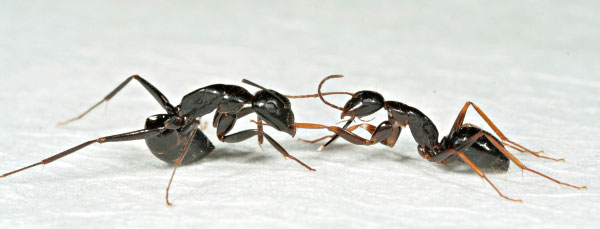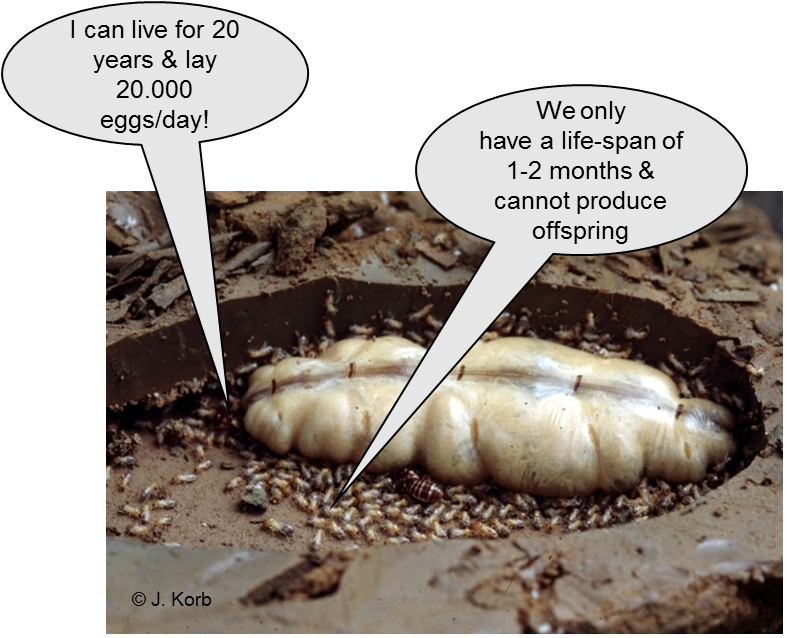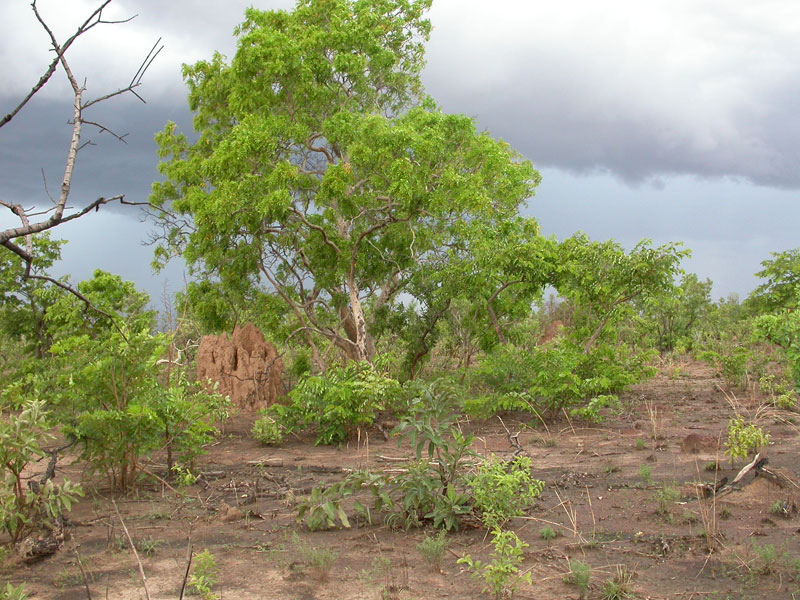J. Korb - Research
Why and when do organisms cooperate?
Social evolution in termites
Termites evolved eusociality independently from social Hymenoptera. This offers the possibility to test for convergent evolution and lineage specific idiosyncrasies. Using the drywood termite Cryptotermes secundus as a model, we are studying ultimate causes and proximate mechanisms underlying social organisation in termites. In this species, workers are totipotent immatures that can develop into soldiers and two types of reproductives: dispersing sexuals or neotenic replacement reproductives that inherit the natal breeding position
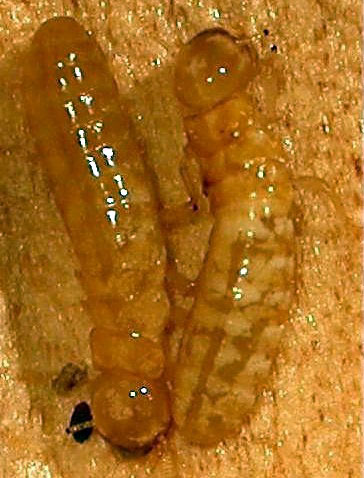
Conflict resolution in termites more...
Decision making in humans more...
Fungus-growing termites and their symbionts more..
How do organisms cooperate?
Sociogenomics – ‘Queen-genes’: Genes underlying reproductive division of labour more...
Social insects are characterised by reproductive division of labour where a few individuals reproduce (in termites: a king and a queen), while the large majority of colony members forego reproduction, at least temporarily (in termites: soldiers and workers). We are studying the genomic underpinning of this division of labour and caste development in the lower termite C. secundus.
Chemical communication in termites and ants more...
Communication is a necessary requirement for cooperation. Social insects can recognize species, nestmates, castes and potentially kin via cuticular hydrocarbons. We are aiming to decipher this communication system in termites and ants.
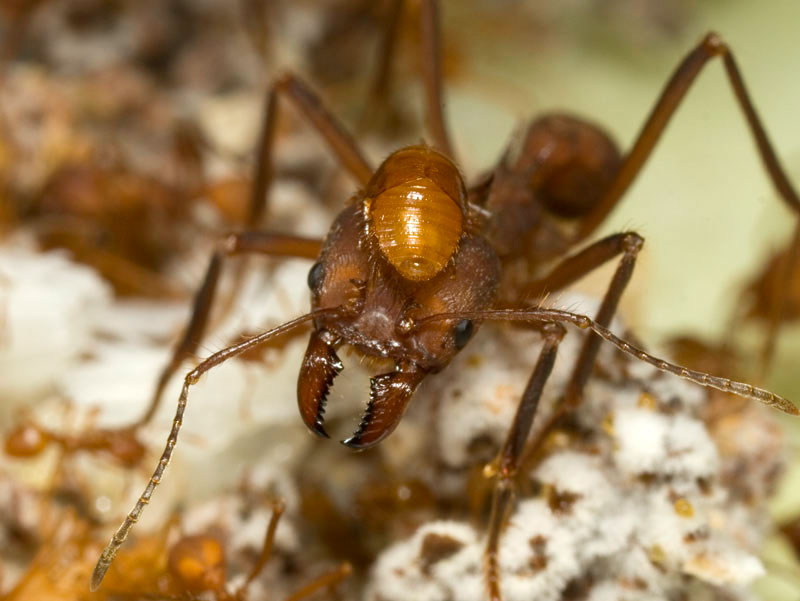 Social insects evolved chemical-based recognition system so that they can direct resources to nestmates only and keep intruders at bay. Sometimes recognition fails, however, so that parasites (Attaphila cockroach in this example) can enter the colony.
Social insects evolved chemical-based recognition system so that they can direct resources to nestmates only and keep intruders at bay. Sometimes recognition fails, however, so that parasites (Attaphila cockroach in this example) can enter the colony.
Ageing: Mechanisms underlying the long life of termite and ant queens
Why do organisms age? The molecular mechanisms underlying ageing seem to be highly conserved from nematode worms, flies and mice to humans. Fundamental seems to be a common life history trade-off in which an increase in fecundity is associated with a decrease in longevity. Social insects are major exceptions; here the reproducing caste, the queen, lives much longer than workers and most solitary insects. We are studying this trade-off in termites and ants in order to understand how/why social insect reproductives can be so long-lived despite their high fecundity.
Phenotypic plasticity – Regulation of caste development: Influence of JH for caste diversity
Insect societies are a result of phenotypic plasticity, i.e., different castes within a colony generally develop from the same genotype through differential gene expression. Termites are unparalleled in this development plasticity. Besides the default progressive development into winged sexuals of solitary hemimetabolous insects, they have additional stationary and regressive moults which allow them to retain workers and two terminal developmental types to become soldiers and neotenic reproductives. How can such a unique developmental plasticity be achieved? We are investigating the role of juvenile hormone (JH) and ecdysone to unravel the endocrine underpinning of termite castes.
Why are there so many species in the tropics?
Termite communities of West-African savannas more...
Termite communities of West-African forests more...
Termite communities from Colombia more...
Arthropod communities of barked and de-barked trees in West-Africa more...


